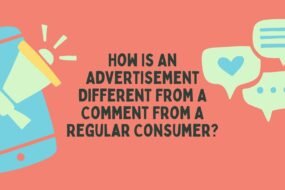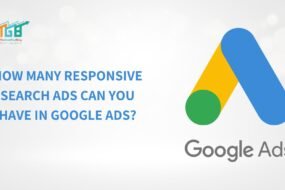
In the current and swiftly evolving business landscape, marketing has significantly transformed. One of the most notable shifts is the growing popularity of “In-house marketing.” This paradigm shift has revolutionized how businesses approach their marketing strategies and operations.
In this blog, we’ll take you on a journey to explore the concept of in-house marketing, delve into its advantages and challenges, uncover strategies for successful implementation, compare it to outsourced marketing, and ultimately arrive at a conclusive understanding.
So, let’s dive in and uncover the secrets to unlocking marketing success through in-house strategies.
What Is In-house Marketing?

In-house marketing, often called internal marketing, is a strategy where a company handles its marketing activities and functions internally, utilizing its employees and resources rather than outsourcing them to external agencies or third-party vendors. This approach gives businesses direct control over their marketing efforts and campaigns.
Advantages And Challenges Of In-House Marketing
Advantages Of In-House Marketing
- Cost Savings: In-house marketing often eliminates the need for expensive agency fees, resulting in significant cost savings. Companies can allocate their budgets more efficiently, directing funds towards marketing campaigns and strategies rather than external service providers.
- Greater Control: With in-house marketing, businesses directly control their marketing activities. That allows for real-time adjustments, immediate responses to market changes, and consistent messaging and branding across all channels.
- Enhanced Brand Alignment: In-house teams intimately understand the company’s values and objectives, ensuring that marketing efforts align closely with the brand’s identity. That leads to more consistent and compelling messaging.
- Quick Decision-Making: In-house marketing teams can make decisions rapidly without waiting for external agency approvals. This agility is crucial for responding swiftly to market trends or unforeseen challenges.
- Data Ownership: Companies retain ownership of their marketing data, ensuring data security and privacy compliance. This data can be leveraged for in-depth analytics and insights, driving informed marketing decisions.
- Direct Communication: In-house teams can communicate directly with other departments within the organization. This close collaboration ensures that marketing strategies are well-integrated with overall business objectives.
- Long-term Expertise: Building an in-house marketing team fosters the development of long-term expertise specific to the industry and brand. This knowledge becomes an invaluable asset for the organization over time.
Challenges Of In-House Marketing
- Talent Acquisition: Recruiting and retaining top marketing talent can be challenging. Companies must compete in a competitive job market and provide attractive compensation and growth opportunities to build a skilled team.
- Workload Management: Balancing marketing tasks with core business functions can lead to overextension and burnout. Companies must carefully manage workloads and resource allocation to avoid these issues.
- Continuous Learning: Marketing is an ever-evolving field; in-house teams must remain abreast of recent trends and technologies. That requires ongoing training and professional development.
- Resource Constraints: Smaller businesses may need more resources to build robust in-house teams. They may need to prioritize certain marketing functions over others.
- Risk of Groupthink: In-house teams may develop a tunnel vision or groupthink mentality, limiting creativity and innovation. Encouraging diverse perspectives can help mitigate this risk.
- Limited External Insights: In-house teams may need more exposure to external industry insights and best practices that external agencies often bring. Companies need to seek external insights to stay competitive actively.
- Scalability Challenges: As businesses grow, in-house teams may face challenges in scaling their marketing efforts to meet increased demands. That requires strategic planning and resource management.
Now that we’ve explored the concept of in-house marketing and discussed its advantages and disadvantages, let’s delve into the practical strategies for effectively putting it into action.
Strategies For Implementing In-House Marketing

Achieving success with in-house marketing demands a carefully formulated approach. Below, we’ll provide an in-depth breakdown of each of these essential strategies:
Building A Dedicated Marketing Team
- Defining Roles and Responsibilities: Begin by defining the roles and responsibilities within your in-house marketing team. That typically includes positions such as marketing manager, content creator, graphic designer, SEO specialist, social media manager, data analyst, and more. The key is to align these roles with the specific needs of your business.
- Strategic Recruitment and Onboarding: The next step involves strategic recruitment and onboarding. When seeking new team members, prioritize professionals with expertise in their respective areas of marketing. It’s not just about the right skills; it’s also about finding individuals who align with your company’s culture and values. Develop a thorough onboarding process that integrates new team members into your organization.
- Investing in Skill Development: Recognize that marketing is a rapidly evolving field. Invest in their ongoing skill development and training programs to keep your in-house team at the forefront of industry trends and best practices. That may include providing access to courses, workshops, and industry conferences and facilitating continuous learning and growth.
Continuing with our strategies for implementing in-house marketing effectively, the next set of crucial steps is to have a comprehensive marketing plan.
Developing A Comprehensive Marketing Plan
- Defining Clear Objectives and KPIs: The first imperative is to set well-defined marketing objectives and key performance indicators (KPIs). These guiding lights steer your marketing efforts in the right direction. Whether you aim to heighten brand awareness, generate leads, or drive sales, articulating these goals is essential.
- Crafting a Content Calendar and Marketing Schedule): A well-structured content calendar becomes your compass in the content creation journey. It meticulously outlines the topics, content types, and publication dates of your marketing materials. This ensures a steady stream of content production and distribution. Complement this with a comprehensive marketing schedule specifying when and where you’ll actively promote your content and campaigns.
- Segmenting and Targeting Your Audience: Understanding your audience is paramount. Identify your target audience and segment it based on demographics, behaviors, and preferences. That increases engagement and the likelihood of conversions by customizing your marketing messages and strategies to connect with each segment’s unique characteristics.
As we navigate the path to successful in-house marketing implementation, the spotlight falls on selecting the right tools and seamlessly integrating them for optimal efficiency.
Utilizing Marketing Technology
- Optimal Tool Selection: Begin by carefully selecting marketing tools and software that harmonize with your goals and objectives. That encompasses a spectrum of solutions, from content management systems (CMS) and software for customer relationship management (CRM) to email marketing platforms, analytics tools, and social media management tools. The key is ensuring these tools integrate seamlessly, facilitating efficient data sharing.
- Integration for Enhanced Efficiency: Integration forms the backbone of streamlined marketing operations. By seamlessly integrating your marketing technology stack, you unlock many benefits, including automating repetitive tasks, gathering actionable insights, and overall improved efficiency. For instance, linking your CRM with your email marketing platform empowers you to track customer interactions and customize email campaigns based on these insights.
Now that you’ve learned how to implement in-house marketing, you might wonder which is better: in-house or outsourced marketing. Don’t fret; we’re here to help you decide which option fits your needs.
Let’s dive in;
In-House Vs. Outsourced Marketing: A Comparison
In-house and outsourced marketing are two distinct approaches to handling a company’s marketing needs. Each approach has its own set of advantages and disadvantages.
Here’s a detailed comparison between the two:
In-House Marketing
- Control and Alignment: In-house marketing provides control over strategies and ensures alignment with your company’s values and objectives due to the deep understanding of your brand by your internal team.
- Cost Savings: In-house marketing eliminates agency fees, resulting in potential long-term cost savings as you have direct control over budget allocation.
- Agility and Real-Time Adjustments: In-house teams can make quick, real-time adjustments to marketing strategies, allowing them to respond promptly to market changes and unforeseen challenges.
- Data Ownership and Expertise: Companies retain ownership of their marketing data, ensuring data security and compliance. Over time, in-house teams develop expertise specific to your industry and brand, serving as valuable assets to your organization and making it a long-term investment.
Outsourced Marketing
- Specialized Expertise: Outsourced agencies offer technical expertise and experience, providing access to diverse skills and knowledge that can enhance your marketing efforts.
- Resource Flexibility: Agencies can swiftly adjust resources to match your needs, offering flexibility to adapt to seasonal fluctuations or unexpected growth.
- Industry Insights: Agencies have exposure to various industries and markets, supplying valuable external insights and best practices that can enhance your marketing strategies.
- Cost Predictability: Outsourcing typically offers more predictable costs, often through fixed or contract-based agency fees, making budgeting easier.
- Speed and Reduced Workload: Agencies can execute marketing campaigns swiftly due to their established infrastructure and expertise. That speeds up time-to-market and reduces the workload within your internal teams, enabling them to concentrate on core business functions. Additionally, the external perspective agencies bring can foster creativity and innovation.
FAQs
Q1: What Is The Primary Advantage Of In-House Marketing?
Answer: The main advantage of in-house marketing is greater control over marketing strategies, ensuring alignment with your brand’s values and objectives.
Q2: How Can In-House Marketing Teams Stay Updated With Industry Trends?
Answer: In-house marketing teams can stay current by investing in ongoing skill development training programs and attending industry conferences and workshops.
Conclusion
Since you’ve comprehensively understood in-house marketing, why not leverage your internal marketing team to achieve substantial results?
Still, if you have any questions related to the blog, then feel free to leave them in the comment section. We will be happy to answer any questions.
Thanks for reading 🙂
Also Read: A Complete Guide To Localized Marketing, and
A complete Guide To Podcast Marketing








No Comments